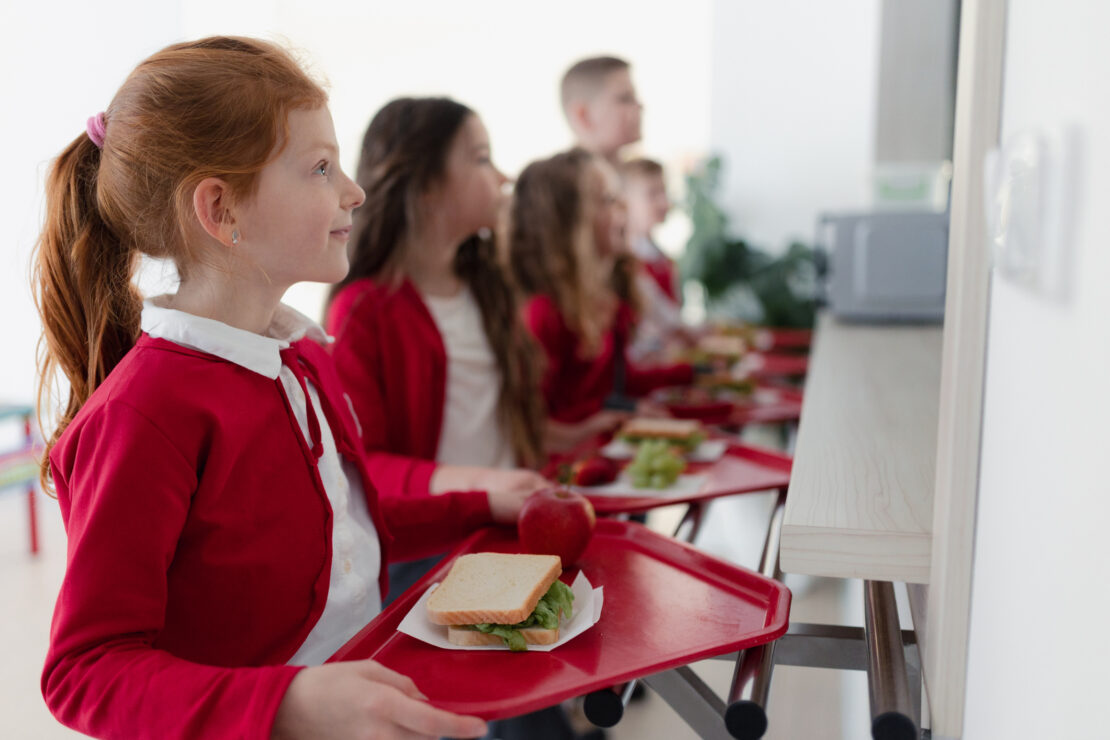Being able to meet people’s nutritional needs is a crucial part of the job for any catering team. Your team must feel confident that no matter who you’re offering food to, you can tick off all the main nutrients they need within tasty, colourful and correctly portioned meals. But since those fitting into different age categories might have additional requirements that must be considered, you might need to be prepared to approach their catering differently.
Other factors, including portioning, hydration, food aversions and preferences can throw some curveballs your way. Knowing the quirks of each age group and the best ways to get their nutrients to them is key. Here, we’ll guide you through everything you should know when catering for people in different age groups, from young children to the elderly.
Nutritional Requirements for Children
Young children and toddlers
The main thing to remember when catering for toddlers and young children is that getting the right nutrients during this stage can be crucial to their development, learning and growth. This is also a great opportunity for them to explore and try different foods for the first time.
With this in mind, one of the most important things to do is persevere with offering fruit and vegetables so that they become integrated into their diets as early as possible. Some toddlers and young children can repeatedly reject these types of foods, but they include key nutrients such as fibre, folic acid and vitamins A, C and E, which are key for children’s development. Trying different ways to include this food group, such as cutting them into fun shapes, adding them as ingredients into other foods or simply including different colours on the plate, can all help. It’s best to offer a wide range of fruits and veg in smaller amounts when you’re controlling portions.

Toddlers can also become full very quickly, so it’s important to gradually introduce starchy foods such as pasta, rice and bread. If they fill up too quickly on these foods, it can prevent them from getting a well-rounded balance of all the necessary nutrients. For instance, it’s recommended that only 2-4 tablespoons of things like pasta and rice are offered in each meal. The BNF portion guide can help you correctly portion food for children and meet their nutritional requirements.
Be mindful of any allergies, and pay attention if you’re offering foods that may cause an allergic reaction. Allergens are often picked up at this age, so it can be the responsibility of the catering team to keep an eye on this.
Older children
This stage of life is normally when children will experience a growth spurt, and with that comes additional nutritional requirements. Calcium-based foods like milk, yoghurt and cheese should be included frequently to ensure their bones can develop properly. Nutrient-dense foods like fruit, veg, fish and lean meats can also be included more to boost iron and keep energy levels up.
For older children, you can begin to introduce cultural diversity into your catering to help them widen their tastes and understand more about where dishes might come from. Not only can this educate them about food from around the world, but it can also help your catering team incorporate different nutrients through more varied ingredient choices.
Nutritional Requirements for Teenagers
Teenage years are crucial for growth and development, which is why a healthy and varied diet is a necessity. Facilitating that as a catering team can be tricky as teenagers might have built up bad eating habits and become stuck eating similar foods, which can limit their nutrient intake. Instead, you want to establish good habits and make sure that teens are well educated on how and why their nutritional requirements must be met.

Breakfast is, as the saying goes, the most important meal of the day. For caterers serving teenagers who might be lacking energy, this is where you can pack plenty of the necessary nutrients to boost energy levels. Offer low-fat and low-sugar cereals, porridge with chopped fruits, boiled eggs and wholegrain toast to give them the nutrients they need to get through the day. Lunches should also include plenty of fruits to ensure they get their five-a-day, dairy produce to help build up bone strength and iron-rich foods like red meat or beans to keep iron levels where they should be.
Reducing the amount of fats and salt offered in foods should also be a priority so that teens can maintain a healthy weight. This can help prevent health issues later in life such as diabetes.
Nutritional Requirements for Adults
At this busy stage of life, it’s best to pack as many nutrients as possible into easy-to-manage meals. Young adults should be encouraged to eat three meals a day with healthy snacks in between. However, they might favour more on-the-go options as these fit with the busier schedules of students and young adults who might not be prioritising their nutrition. Because of this, your team might need to get creative with nutritionally-dense options such as breakfast bars, protein snacks and healthy sandwiches to ensure they aren’t missing any key nutrients.
For older adults, it’s recommended that they should be offered a balanced and varied diet to support their energy levels and help maintain healthy weight. The main differences in catering will come with changes such as pregnancy, breastfeeding and menopause. For these changes, you might need to increase the intake of certain nutrients. For those breastfeeding or pregnant, vitamin B12 and foods rich in folate, iodine, zinc and calcium should be prioritised.
Something to also be aware of is that for adults who are menopausal, nutritional requirements may differ due to hormone-related changes. Calcium-rich foods are recommended since bone thinning is common after menopause. It’s also important that those going through these changes are offered a high-fibre, low-salt and low-fat diet packed with whole grains and nutrient-dense foods.
Nutritional Requirements for Elderly People

Catering for elderly people will require a different approach, although it can be quite similar to how you tackle catering for younger children. As we age, it can become difficult to manage larger meals or certain textures, so it’s important to keep this in mind when you’re trying to meet their nutritional needs.
Appetite loss can be a big issue, especially when elderly people are in new environments. So, if you’re catering to elderly people in care homes, you’ll need to understand how to support them while maintaining their nutrition levels. The main concern is that they can lose muscle mass, which can significantly impact their strength and ability to move around as they should be able to. Therefore, nutrient-dense foods like eggs, nuts, seeds, wholegrain breads and lean meats should be offered to help them maintain muscle mass.
You might also need to consider switching the texture of their foods if they appear to have a difficult time swallowing or chewing certain foods. Some crunchy or hard foods like apples, pears, cereals and lean meats can be prepared differently to make them softer, easier to chew and support digestion.
Finally, providing around eight cups of water per day is something that’s important since a lack of hydration can have a big impact on elderly people, especially when they’re struggling with a low appetite.
For catering teams trying to find the best ways to provide nutrients to those they cater for, it can be tricky to manage operations and maintain efficient procurement processes. With the help of our catering solutions, your team can be in the best position to offer the very best service. With Freshmarkets, you can manage orders, access bespoke data reports, and oversee price lists with ease. Meanwhile, Catercloud offers live nutritional and allergen data alongside meal planning, recipes and costing tools to support your team. Fancy seeing for yourself how these platforms work? Enquire with us today.


